#Mali Soninke peoples
Text

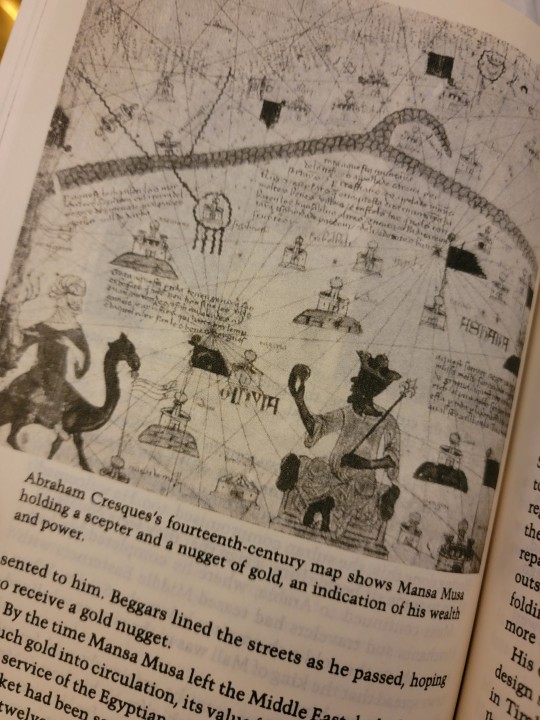




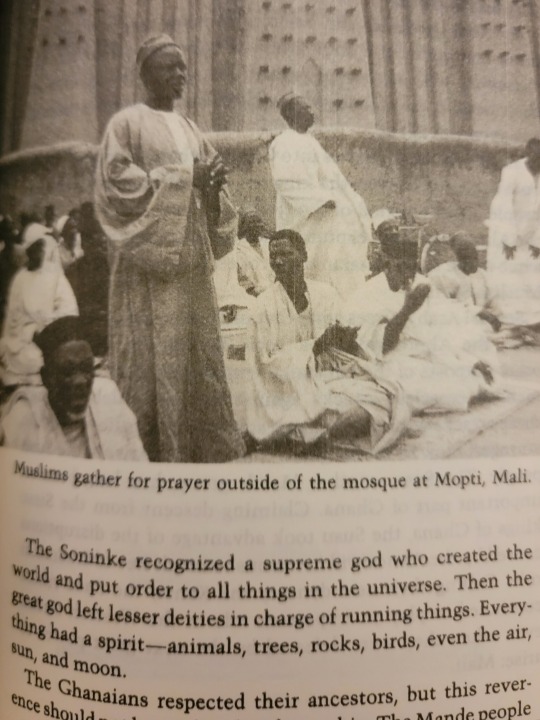



A sun that never sleeps
#sahelcore#mali#senegal#sahel#bambara#burkina faso#wolof#sahel aesthetic#soninke#gnawa#sahelian people#gassire#old ghana#wagadu#gnawa men#Spotify
0 notes
Text

Out on the grassy plains of West Africa, this huntress is aiming her arrow with her loyal hyena standing behind her.
I didn’t have a particular culture in mind when designing the character, but if I had to pick one for her post hoc, she would be an ancestress to Mandé peoples like the Soninke and Mandinka who would later found empires like Wagadou (or old Ghana) and Mali.
#west african#african#black woman#woman of color#dark skin#woc#warrior woman#hyena#spotted hyena#fantasy#digital art#art
45 notes
·
View notes
Text


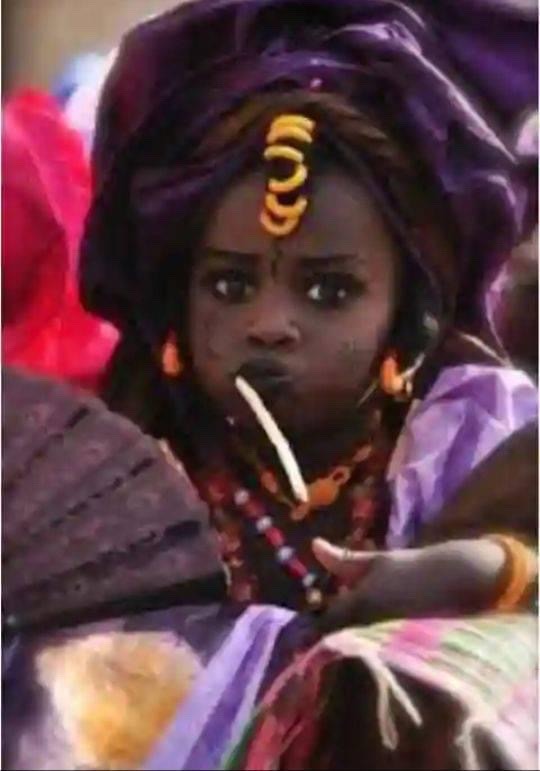
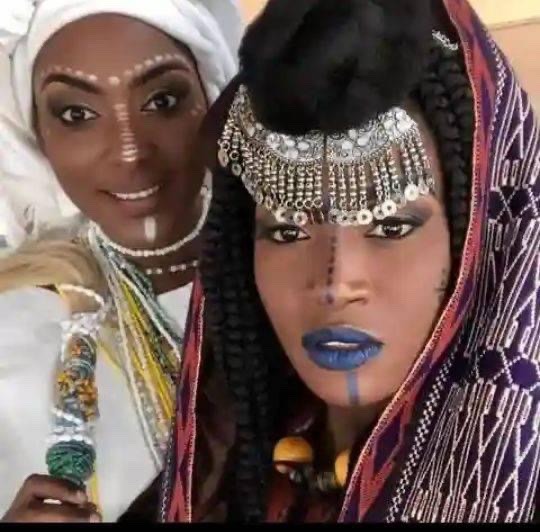
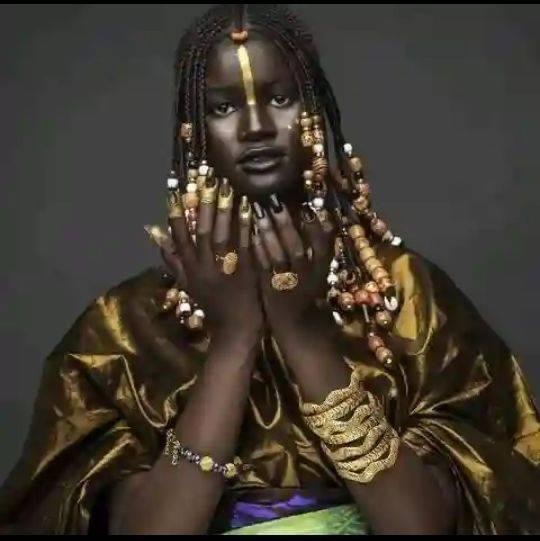
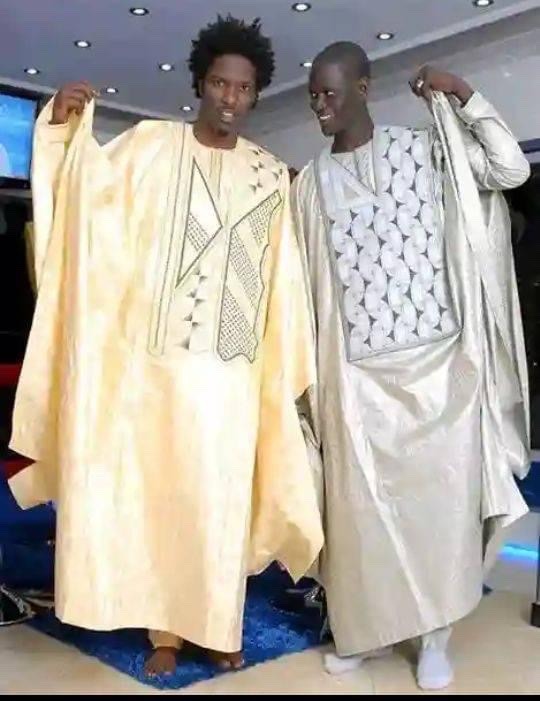


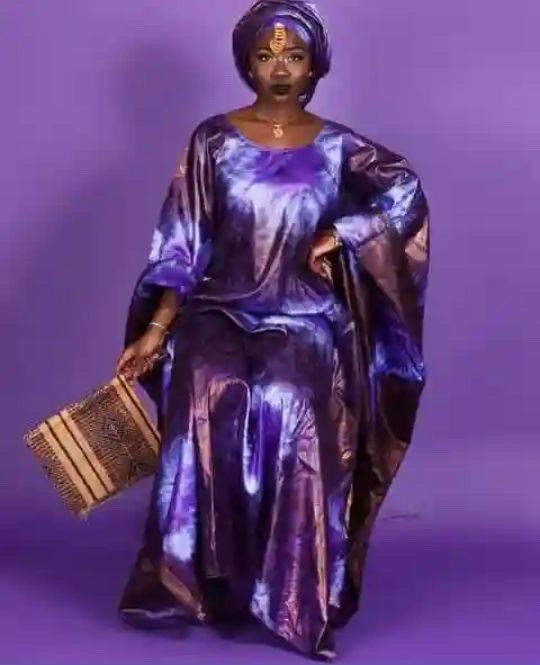
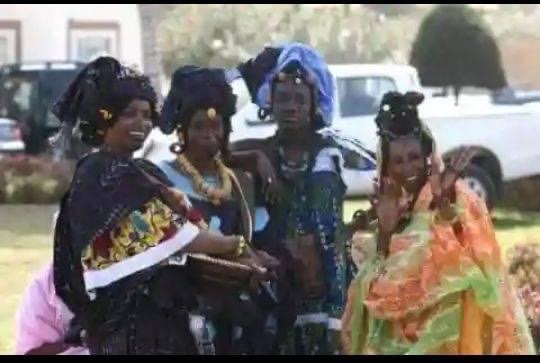
Wolof largest ethnic in Senegal 🇸🇳.
Wolof are very tall and mostly dark skin people of sahel (west Africa) found majority in Senegal, Gambia and southwestern Mauritiania, somewhere found small minorities in mali, guinea and guinea bissau. Wolof are ethnically senegambian family an ethnic family that include serer, fulani, jola or Diola, tuculur and lebu which culturally, and linguistically appear to be mutually intelligible as senegambian family that their origin date back to ancient bafour of Mauritania and far southermost sanhaja berber tribe called zenegha from where the word senegal come from. The ancient bafour paleolitic expansion appear to be mande ethnic family that their Neolithic expansion emerge as the pure ancestry to senegambian family.
The mande ethnic family ( serehule, mandinka, soninke, malinke, sosso, mandingo etc) and senegambian family (fulani, wolof, jalo, serer etc) share same origin and ancestry from basal west Africans ( the pure west African lineage) Bafour of Mauritiania
13 notes
·
View notes
Photo

A marabout surrounded by the faithful in a village of the Soninke people between Mauritania and Mali. (Photo by DeAgostini/Getty Images)
25 notes
·
View notes
Text
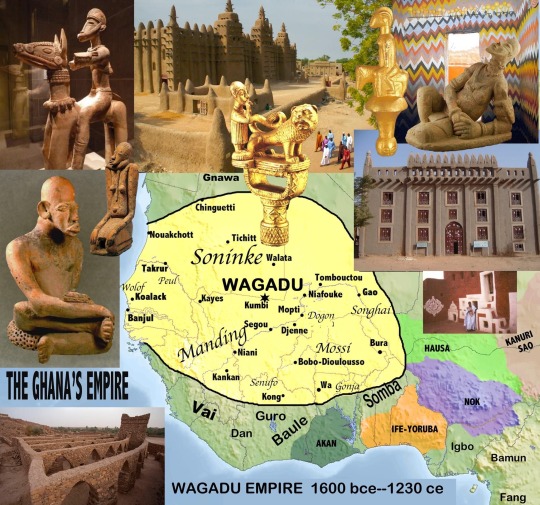
The Wagadu Empire (known to Europeans and Arabs as the Ghana Empire, named after the title of the emperor) is one of the most important African civilizations of all time.
European archaeologist, Augustin Holl, confirmed that its stone ruins were built by indigenous Soninke people (as opposed to Arabs) and date to at least 1600 bce.
Wagadu was the western arm of a great Sahelian-Sudanese trade across the savanna belt that stretched from the Takrur kingdom of Senegal to the Aksummite Kingdom of Ethiopia-Eritrea. In fact, the majority of gold that Kush traded with Kemet and West Asia was actually from its Sahelian trade network with Wagadu, the most gold rich civilization in world history.
The Wagadu Empire's stone ruins remain all across Mali and Mauritania, but few Black scholars are investigating it in favor of Kemet. Meanwhile, many Arab scholars are trying to convince the world that Wagadu's origins are actually from "Berber" (which they define as non-Black Saharans of Asiatic origin). One of the foundations they have to rest on is the ignorant Black muslim tradition of inventing false Arab origins for their kings in order to validate them in the muslim world. It is for this reason that Arabs cite the false lineages of Ghana's kings as Arab, a myth perpetuated by wannabe Arab Blacks in Africa.
This stupid tradition of assigning false Arab origins is not limited to Ancient Ghana, but virtually all Islamic people in Africa. The Somali are the most famous for inventing a false Arab origin, as are the Swahili. The Yoruba muslims even have blasphemously claimed their first king, Oduduwa, was from Arabia. So ashamed are these fools to claim indigenous West Africa as their motherland. Even today, many African American muslims imagine a fictional Arab origin for themselves.
However, let's be clear that the people and kings of Wagadu did NOT consider themselves Arab, Berber, or anything but indigenous West Africans.
They were not muslim, even when in the dusk of their era they allowed some muslims to trade in their city. The Wagadu practiced a spiritual system centered around Bida, the control of the reptilian instincts in man and the cultivation of these instincts into divine powers. This is similar to the Vodun veneration of Damballah Wedo and the Kemetic veneration of Wadjet.
The Arabization of Wagadu history is a later invention promoted by the Songhai Empire and later West African muslim shameless fools.
Until the African of the world values their own African culture MORE than the Arabs, we will continue to be historically impoverished. While Kemet was Black and great, it was just the tip of African glory. We must understand ALL of African civilization, not just Kemet.
8 notes
·
View notes
Text
Mali
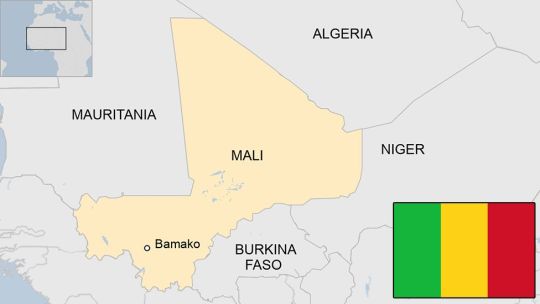
Government type: Transitional government, one legislative council
President: Colonel Assimi Goita (interim) with Prime Minister Choguel Maiga (interim)
Languages: Mali has 13 national languages and roughly 80 spoken languages within its borders. The most commonly spoken is Bambara, as well as Fula, a variety of Mande-family languages such as Bozo and Bobo, Maninka, and Arabic. French is used solely as a working language (with a population of 22 million, only around 9000 people speak French as a first language, and it is rarely used outside of business) (Encyclopedia Britannica).
Religion: 95% Islam, 5% Other
Ethnic groups: Due to the historical Mali Empire, the ethnic makeup of modern day Mali is also highly varied. Still, the population is 33% Bambara, 13% Fula, 9.6% Soninke, 9.6% Senufo. The remaining population are Malinke, Dogon, Songhai, Tuareg, Bobo, Amazigh and others.
Industries: Mainly self-subsistence agriculture and animal husbandry. Otherwise, Malians grow cotton to sell or work as migrant farmers both in Mali and in neighboring countries (Cote d'Ivoire, Senegal) (Encyclopedia Britannica). Mali's economy is held in severe debt to foreign powers, particularly France, as a holdover from colonialism, which contributes to the difficulties developing the industrial sector. Mali also contributes to the global gold trade.
Capital City: Bamako- located in in the southern-most region of Mali
Currency: West African CFA franc (abbreviated XOF), colloquially called simply "francs"
Land and Environment: Modern-day Mali is landlocked, with half the country made up of the Sahara desert with very light population density (for the entire Northern half of the country, population density maps list as having "between 1 and 5 persons per kilometer") (NASA Socioeconomic Data and Applications Center). The Niger river is also a great source of activity for the country, with major irrigation projects along its banks. The river runs from the Guinea border to the southwest, through the capital Bamako, north through Timbuktu in the center of the country, and back southeast into Niger and Nigeria. The largest ethnic group, Bambara, primarily live along the upper Niger river (Encyclopedia Britannica).
Brief History: The lands of Mali have been the site of many empmires, cultures, and regimes. The namesake, the Mali empire, extended from the center of present-day Mali in Timbuktu (Tombouctou in French) in all directions, included most of present-day Niger, the former Ghana empire, through to the Atlantic. The empire gained power in the 11th century because of the rapidly growing gold trade, unified by King Sundiata (for more information, see Sundiata: An Epic of Old Mali). The decline of the Mali empire in the 15th century led to the country changing hands many times over: the Songhai empire ruled, then were dispersed/devastated by Moroccan armies, then pressure from the French in Senegal triggered religious wars in Mali which ended in the country building a theocracy (the Segou Tukulor empire). The French, seeking control of the Niger River in competition with Britain, occupied Bamako in the 1890s, driving out the local aristocracy. In 1959, Mali and Senegal united to form the Mali Federation, and it gained independence in 1960. The nation started with a strong socialist basis, but following economic instability as a brand new nation, there was a series of coups that culminated the March Revolution, mass protests in Bamako with violent military retribution. The conflict ultimately ended because soldiers refused to fire their weapons and joined the pro-democratic cause. Although there are still political instabilities, a bigger issue is conflicts between ethnic groups. With climate change gradually growing the Sahara, the Fula are moving into the higher populated regions, sparking tensions between the different groups such as the Ogossagou massacre in 2019. This is within the context of an ongoing Mali War since 2012 between the northern and souther halves of Mali.
0 notes
Text
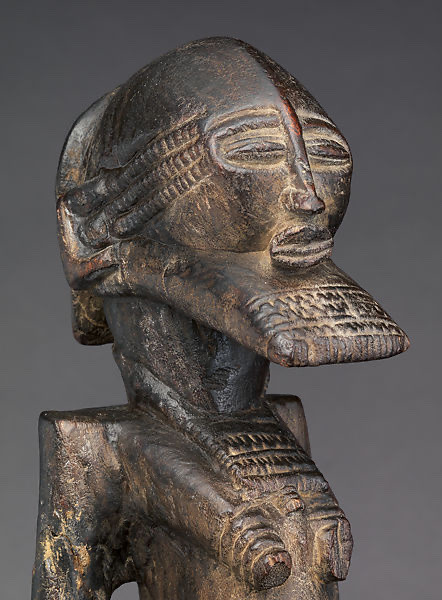
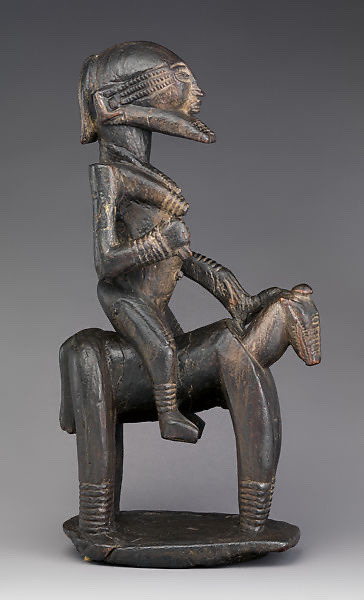

Equestrian
Mali, Soninke peoples
Wood sculpture, ca. 1400
29 notes
·
View notes
Photo

‘Femme Sarakole’ (Sarakole woman) - unknown photographer, undated.
The Soninke (also called Sarakole, Seraculeh, or Serahuli) are a Mandé people who descend from the Bafour and are closely related to the Imraguen of Mauritania. They speak the Soninke language, a Mande language. They were the founders of the ancient empire of Ghana c. 750-1240 CE. Subgroups of Soninke include the Maraka and Wangara.
When the Ghana empire dispersed, the resulting diaspora brought Soninkes to Mali, Senegal, Mauritania, Gambia, and Guinea Bissau. This diaspora included Wangara, famous traders who spread far from traditionally Mande areas. Hence the term Wangara is used today in Ghana and Burkina Faso to describe the Soninke populations in cities and towns. Today, Soninke are around 1 million.
34 notes
·
View notes
Text

Figure of a kneeling woman, of the Dogon (Soninke) peoples, present-day Mali and Burkina Faso. Artist unknown; ca. 1500. Now in the Metropolitan Museum of Art.
#rt#art history#Africa#African#African art#West Africa#West African#West African art#Dogon#Soninke#indigenous peoples#indigenous art#folk art#sculpture#woodwork#carving#16th century art#Metropolitan Museum of Art
104 notes
·
View notes
Photo
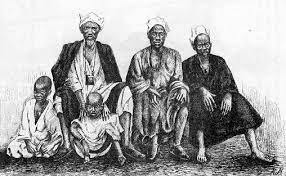
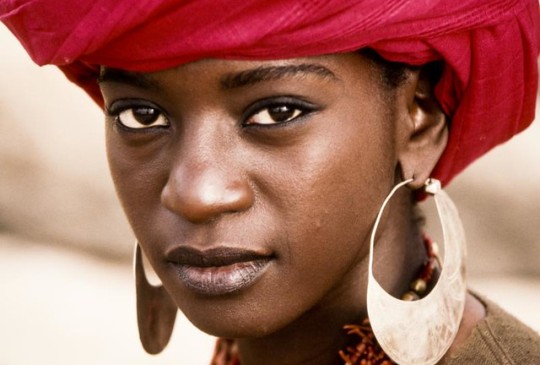
All of the West African groups contributed to the development of Louisiana Voodoo. Their knowledge of herbs, poisons, and the ritual creation of charms and amulets, intended to protect oneself or harm others, became key elements of Louisiana Voodoo.
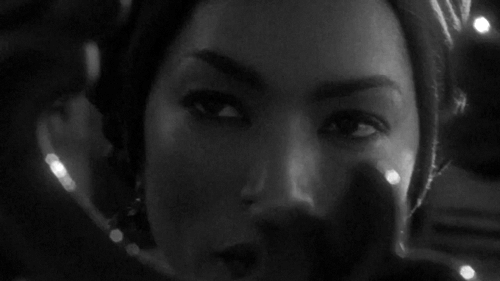
During the French colonial period, around 80 percent of the enslaved Africans brought to Louisiana were from the Bambara people of the Senegal River basin. Most of the other 20 percent were Kongolese, with a few from Dahomey.
After the Spanish took control, increasing numbers of slaves were imported from the Kongo, ensuring a "Kongolization of New Orleans's African American community"
The Bamana originated as a royal section of the Mandinka people. They are founders of the Mali Empire in the 13th Century. Both Manding and Bambara are part of the Mandé ethno-linguistic group, whose divergence is dated to at least about 7,000 years ago, and branches of which are associated with sites near Tichitt (now subsumed by the Sahara in southern Mauritania), where urban centers began to emerge by as early as 2500 BC.

By 250 BC, a Mandé subgroup, the Bozo, founded the city of Djenne. Between 300 AD and 1100 AD, the Soninke Mandé dominated the Western Mali, leading the Ghana Empire. When the Mandé Songhai Empire dissolved after 1600 AD, many Mandé-speaking groups along the upper Niger river basin turned inward. The Bamana appeared again in this milieu with the rise of a Bamana Empire in the 1740s, when the Mali Empire started to crumble around 1559.
According to the Encyclopedia of Africa, "Bambara" means "unbeliever" or "infidel"; the group acquired the name because it resisted Islam after the religion was introduced in 1854 by Tukulor conqueror El Hadj Umar Tall.
#african#brownskin#bambara#new orleans#african american#kongolization#kongolese#louisian voodoo#west african#amulets#mande#niger#bamana#songhai#kemetic dreams
134 notes
·
View notes
Text
I See You

Name: Senegal
Demonym: Senegalese
Etymology: Senegal is translated from the Wolof “sun gal” to mean “our boat”.
Capital: Dakar
Motto: "Un Peuple, Un But, Une Foi" (French)
"One People, One Goal, One Faith"
Location: West Africa
Population: 16,313,742 (2018)
Religion: Islam is the predominant religion in the country, practiced by approximately 94% of the country’s population; the Christian community, at 5% of the population, are mostly Roman Catholics.
Climate: Sahelian
Language(s) Spoken: French and Wolof
National Languages: Balanta-Ganja, Hassaniya Arabic, Jola-Fonyi, Mandinka, Mandjak, Mankanya, Noonm, Pulaar, Serer, Soninke
Currency: CFA franc (XOF)
Independence Day:
- From France 4 April 1960
- Withdrawal from the Mali Federation 20 August 1960
Flag meaning: The red, yellow and green are the official Pan-African colors, and the centered star is symbolic of hope and unity.
Brief History
Archaeological findings throughout the area indicate that Senegal was inhabited in prehistoric times and has been continuously occupied by various ethnic groups.
Some kingdoms were created around the 7th century: Takrur in the 9th century, Namandiru and the Jolof Empire during the 13th and 14th centuries. Eastern Senegal was once part of the Ghana Empire.
Islam was introduced through Toucouleur and Soninke contact with the Almoravid dynasty of the Maghreb, who in turn propagated it with the help of the Almoravids, and Toucouleur allies.
This movement faced resistance from ethnicities of traditional religions, the Serers in particular.
In the 13th and 14th centuries, the area came under the influence of the empires to the east; the Jolof Empire of Senegal was also founded during this time.
In the 14th century the Jolof Empire grew more powerful, having united Cayorand the kingdoms of Baol, Sine, Saloum, Waalo, Futa Tooro and Bambouk, ormuch of present day West Africa.
The empire was a voluntary confederacy of various states rather than an empire built on military conquest.
The empire was founded by Ndiadiane Ndiaye, a part Serer and part Toucouleur, who was able to form a coalition with many ethnicities, but collapsed around 1549 with the defeat and killing of Lele Fouli Fak by Amari Ngone Sobel Fall.
Colonial Era
In the mid-15th century, the Portuguese landed on the Senegal coastline, followed by traders representing other countries, including the French.
Various European powers-Portugal, the Netherlands, and Great Britain-competed for trade in the area from the 15th century onward.
In 1677, France gained control of what had become a minor departure point in the Atlantic slave trade-the island of Gorée next to modern Dakar, used as abase to purchase slaves from the warring chiefdoms on the mainland.
European missionaries introduced Christianity to Senegal and the Casamance in the 19th century.
It was only in the 1850s that the French began to expand onto the Senegalese mainland after they abolished slavery and began promoting an abolitionist doctrine, adding native kingdoms like the Waalo, Cayor, Baol, and Jolof Empire.
French colonists progressively invaded and took over all the kingdoms except Sine and Saloum under Governor Louis Faidherbe.
Senegalese resistance to the French expansion and curtailing of their lucrative slave trade was led in part by Lat-Dior, Damel of Cayor, and Maad a Sinig Kumba Ndoffene Famak Joof, the Maad a Sinig of Sine, resulting in the Battle of Logandème.
Independence (1960)
On April 4, 1959 Senegal and the French Sudan merged to form the Mali Federation, which became fully independent on 20 June 1960, as a result of a transfer of power agreement signed with France on 4 April 1960.
Due to internal political difficulties, the Federation broke up on 20 August, when Senegal and French Sudan each proclaimed independence.
Léopold Sédar Senghor was Senegal's first president in September 1960.
Senghor was a very well-read man, educated in France.
In 1980, President Senghor decided to retire from politics.
Former prime minister Mamadou Dia, who was Senghor's rival, ran for election in 1983 against Diouf, but lost.
Senghor moved to France, where he died at the age of 96.
Senegal joined with the Gambia to form the nominal Senegambia Confederation on 1 February 1982.
Despite peace talks, a southern separatist group in the Casamance region has clashed sporadically with government forces since 1982 in the Casamance conflict.
In the early 21st century, violence has subsided and President Macky Sall heldtalks with rebels in Rome in December 2012.
He encouraged broader political participation, reduced government involve mentin the economy, and widened Senegal's diplomatic engagements, particularly with other developing nations.
Domestic politics on occasion spilled over into street violence, border tensions, and a violent separatist movement in the southern region of the Casamance. Nevertheless, Senegal's commitment to democracy and human rights strengthened.
In the presidential election of 1999, opposition leader Abdoulaye Wade defeated Diouf in an election deemed free and fair by international observers. Senegal experienced its second peaceful transition of power, and its first from one political party to another.
On 30 December 2004 President Wade announced that he would sign a peace treaty with the separatist group in the Casamance region. This, however, has yet to be implemented. There was a round of talks in 2005, but the results have not yet yielded a resolution.
Geography

Senegal is located on the west of the African continent.
It lies between latitudes 12° and 17°N, and longitudes 11° and 18°W. Senegal is externally bounded by the Atlantic Ocean to the west, Mauritania to the north, Mali to the east, and Guinea and Guinea-Bissau to the south; internally it almost completely surrounds The Gambia, namely on the north, east and south, except for Gambia's short Atlantic coastline.
The capital Dakar lies on the Cap-Vert peninsula, the westernmost point of continental Africa.
Culture

*Wolof village*
Senegal has a wide variety of ethnic groups and, as in most West African countries, several languages are widely spoken.
The Wolof are the largest single ethnic group in Senegal at 43 percent; the Fulaand Toucouleur are the second biggest group, followed by the Serer, the nothers such as Jola, Mandinka, Maures or, Soninke, Bassari and many smaller communities.
About 50,000 Europeans and Lebanese as well as smaller numbers of Mauritanians and Moroccans reside in Senegal, mainly in the cities and some retirees who reside in the resort towns around Mbour.
Also located primarily in urban settings are small Vietnamese communities as well as a growing number of Chinese immigrant traders, each numbering perhaps a few hundred people.
There are also tens of thousands of Mauritanian refugees in Senegal, primarily in the country's north.
According to the World Refugee Survey 2008, published by the U.S. Committee for Refugees and Immigrants, Senegal has a population of refugees and asylum seekers numbering approximately 23,800 in 2007.
Refugees live in N'dioum, Dodel, and small settlements along the Senegal River valley.
SOME WOLOF PHRASES
Welcome
- Merhbe
Hello (General greeting)
- Na nga def (sg)
- Na ngeen def (pl)
- Salaam aleekum
How are you?
- Jaam nga am? (Have you peace?)
- Na nga def?
Reply to 'How are you?'
- Jaam rek, Yow nag? (Peace only, and you?)
- Mangi fi rekk, na nga def?
Long time no see
- Gej na la giis
What's your name?
- Naka-nga sant?
- Na nga tudd?
- Noo tudd?
My name is …
- Maa ngi tudd ...
- ... laa tudd
Where are you from?
- Fan nga joge? (sg)
- Fan ngeen joge? (pl)
I'm from …
- Maa ngi joge ...
- ... laa joge
Pleased to meet you
- Am nàa mbekte ci guiss la
Good morning
(Morning greeting)
- Jaam nga fanane
Good afternoon
(Afternoon greeting)
- Jamm nga yendoo
Good evening
(Evening greeting)
- Naka ngon si
Goodbye
(Parting phrases)
- Ba beneen
- Mangi dem
Good luck!
- Màa ngui lay nianal weurseuk
Cuisine
The basic food is rice cooked with a spicy sauce and vegetables. The national dish is chep-bu-jen,the Wolof word for rice with fish. Cooked in a tomato sauce with boiled fish and a few vegetables (carrots, cabbage, and green peppers),chep-bu-jen is originally from the city of Saint-Louis.Yassa,a dish from Casamance is chicken or fish marinated in lemon juice, pepper, and onions and then baked. It is accompanied by plain white rice. Other sauces include mafé, domada and soupe kandja,(which is made from okra with fish and palm oil).

Landmarks
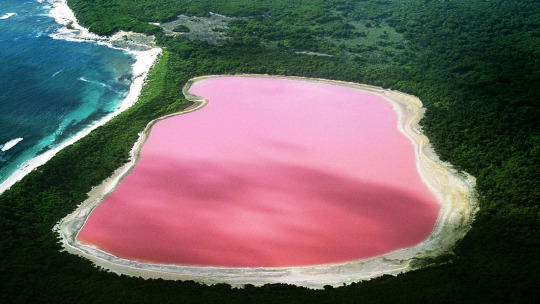
The Lake Retba (Lac Rose meaning Pink lake) - It is named for its pink waters caused by Dunaliella salina algae and is known for its high salt content, up to 40% in some areas.
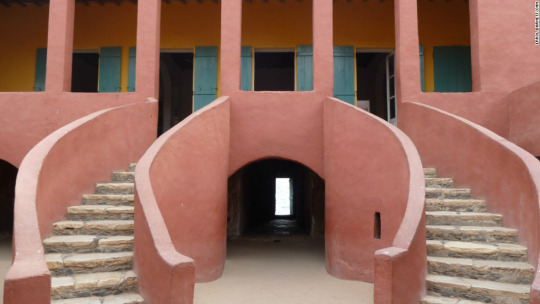
The House of Slaves and its Door of No Return is a museum and memorial to the Atlantic slave trade on Gorée Island, 3 km off the coast of the city of Dakar, Senegal. Its museum, which was opened in 1962 and curated until Boubacar Joseph Ndiaye's death in 2009, is said to memorialize the final exit point of the slaves from Africa.
While historians differ on how many African slaves were actually held in this building, as well as the relative importance of Gorée Island as a point on the Atlantic Slave Trade,visitors from Africa, Europe, and the Americas continue to make it an important place to remember the human toll of African slavery.
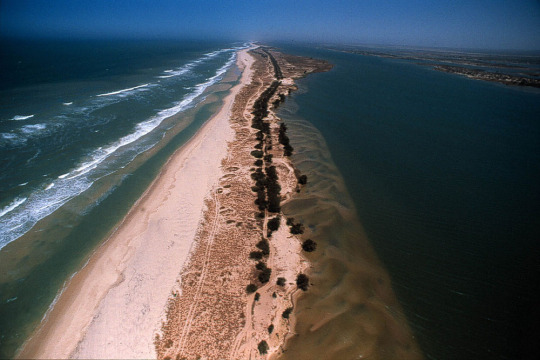
The Langue de Barbarie is a thin, sandy peninsula, adjacent to the Atlantic Ocean, located in western Senegal, in the neighborhood of the city of Saint-Louis. The peninsula separates the ocean from the final section of the Senegal River.

The Great Mosque of Touba is a mosque in Touba, Senegal. It was founded by Amadou Bamba in 1887 and completed in 1963. Bamba died in 1927 and is interred inside the mosque. Since his death the mosque is being controlled by his family.
Some interesting facts about Senegal
1. In the 16th century when the Portuguese visited the country’s coast, the fishermen said “sunu gaal”, which translates into “these are our boats”. The Portuguese, who understood nothing, simply named their land “Senegal”. Classic colonizers!!
2. Senegal’s location towards the west coast made it a hub for the international slave trade of the 18th and 19th century. Gorée Island, in particular, became a major transit point of the Atlantic Slave Trade.
3. In contemporary times, Senegal is very close to France. In fact, the very flag of Senegal has adopted the French Tricolor style. So the flags of both look the same, except for the color
4. Senegal is the only country in West Africa which wasn’t overrun by a military coup. Its democratic stability has earned it many allies in Europe and the Americas.
5. The common lingo of Senegal has a word called, “Teranga”. It has a very sweet and hospitable meaning and has become the identity of Senegalese people. It means helping a person to come to your land and settle down.
6. Dakar is home to the tallest statue in Africa. The African Renaissance Monument built in 2010, stands at an impressive 49 m, but still a meter short of a half-century.
7. Senegal is a paradise for footballers. Many prominent players like El Hadji Diouf, Henri Camara, Ferdinand Coly, Bouna Coundoul, etc. have been inducted into the European League from this country.
8. Senegal’s grasslands have given the country its two national symbols, the baobab tree, and the red lion.
Questions
1. Are you from Senegal or know someone from there?
2. Are you interested in learning Wolof?
3. What’s your favorite thing about Senegal?
4. Do you know anything about Senegal I forgot to mention?
5. Which country/Island do you think I should share about next?
PLEASE INFORM ME IF THERE IS ANY MISTAKE SO I CAN CORRECT IT. THANK YOU :)
*I know I said ISY project is about unknown/less talked about countries but I thought I should share about Senegal since I love it’s people and wanted to know more about their culture.
+ about ISY mini project
+ Previous ISY countries : VANUATU, KYRGYZSTAN .
#I SEE YOU#ISY mini project#SENEGAL#WOLOF#languages#langblr#languageblr#studyblr#history#geography#africa#countries#dakar
3 notes
·
View notes
Text
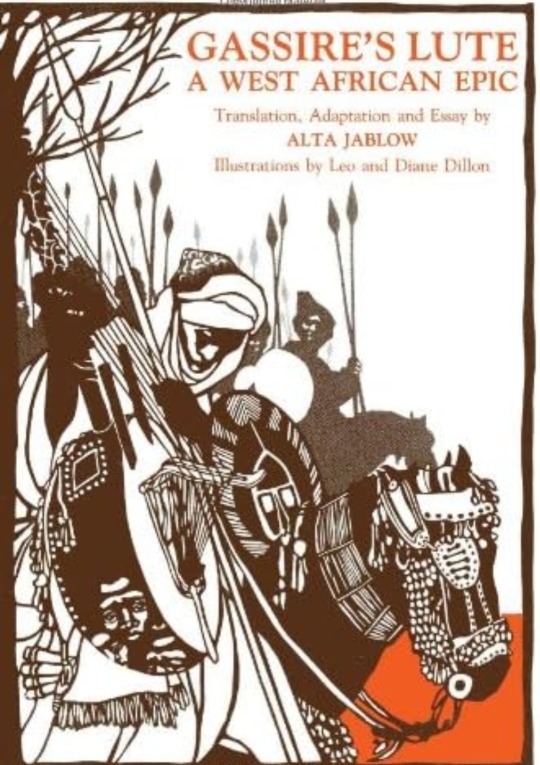
This orature legend of the birth of the Soninke bardic art chronicles the fall of Wagadou, the Soninke/Mande empire more popularly known as Ghana (not present day Ghana the country, which is named after this historical Mauritanian-Senegalese-Malian region empire).

Follow Gassire the warrior prince, who turns away from nobility to become his people's first diari (griot: bard).
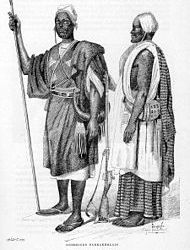
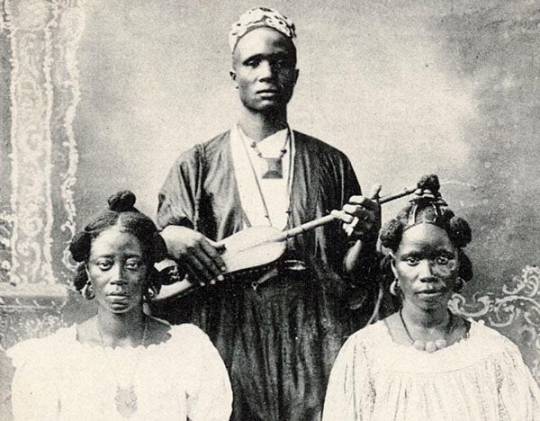
Here is a song named for the Soninke
https://open.spotify.com/track/55YdtD6BbmJ7NsDW4Z1Dpo?si=2Ogi-U2QQkuHoSZef_-PXw
Wagadou rose between the 1st-3rd century and fell in the 13th century, after being conquered by Sosso and submitting to the later Malian empire. Wagadou was preceded by Dhar Tichitt (1600 BC) and Djenne-Djenno, the ruins of which can be seen today. It was followed by Mali and Songhay, 2 of the most powerful kingdoms in the old Sahel.
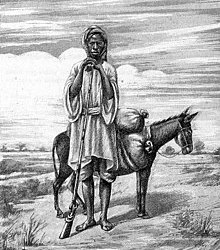
Ghana means "warrior chief," and Wagadou (the Soninke name) could be named for the Wague (name for the nobility of the region) or named after the Soninke goddess. Legend says that when the 2 sons of the Kaya Maghan (king of gold, 800 Dinga Cisse, princes Khine and Dyabe fought over who should take the throne. Khine was victorious, continuing the Cisse Tounkara dynasty. However, Dyabe in humiliation, made a deal with the seven headed snake Bida, who promised victory over his brother in exchange for sacrificing a beautiful virgin every year. It was believed that the prosperity and gold that granted that prosperity was a result of these sacrifices, and so they continued until the brave fiance Maadi of the beauty Sia Yatabere was the first to rebel, slaying the snake and cutting its heads. Bida cursed Wagadu to drought and ruin, and sure enough, Wagadou fell, and the Soninke had to migrate southwards to find fertile land.
The now rare film Sia, Le Réve du Python, is based on this legend.


The capital of Ghana/Wagadou is believed to be Koumbi-Saleh. Here is an ambient instrumental piece paying homage to this ancient city:
https://open.spotify.com/track/4SRL7gOHRxrSb4TyvrBnvq?si=sNF5NePgQYqGOIsCbsdSCg
Vintage video of Soninke girls singing and flute player
https://youtu.be/bQm2aIVHakw?si=Rf3oYrcOsGnEAXTS
Soninke traditional drum dance
https://youtu.be/8FmiE_kdda0?si=7PQPVdYE0gNAJ4et
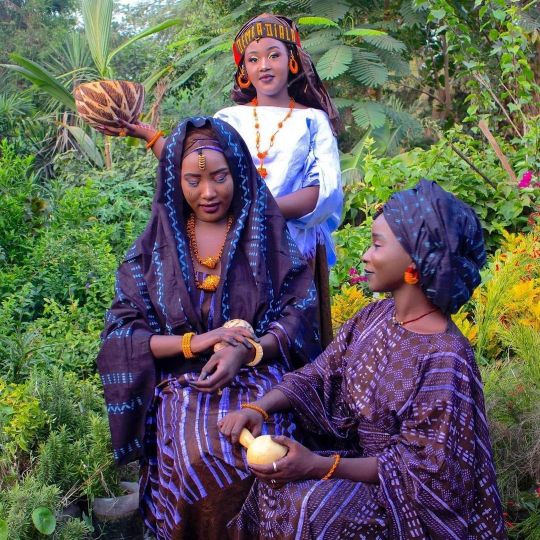
#sahel#sahelian history#soninke#wagadou#ouagadou#ghana empire#kaya maghan#sahelcore#bida#seven headed snake#wagadu#legend of wagadu#sia yatabere#sia dream of the python#dinga cisse#sahelian music#sahel aesthetic#gassire's lute#alta jablow#griots
4 notes
·
View notes
Text
Ghana Empire
#Wagadou, commonly known as the #GhanaEmpire, was a West #Africanempire that existed from c. 300 until c. 1100.
#AfricanHistory
Wagadou, commonly known as the Ghana Empire, was a West African empire based in the modern-day southeast of Mauritania and western Mali that existed from c. 300 until c. 1100. The Ghana empire, sometimes also known as Awkar, was founded by the Soninke people and was based in the capital city of Koumbi Saleh.
Complex societies based on trans-Saharan trade in salt and gold had existed in the…

View On WordPress
0 notes
Text
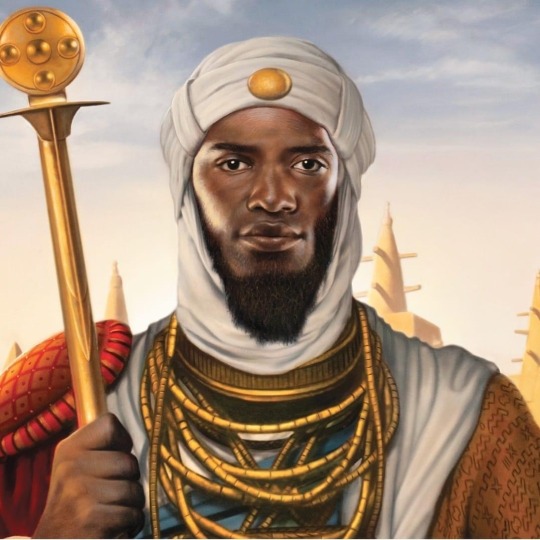
White people ask, why has there never been a powerful African nation like Rome, Persia, or the Aztecs?
Wait, seriously? “Never been a powerful African nation," says who exactly?
I’d presume you’ve never heard of some of these before:
ZULU KINGDOM. They crushed the British in their first battle and wrecked havoc on the Boers.The Zulu Kingdom, sometimes referred to as the Zulu Empire or the Kingdom of Zululand, was a monarchy in Southern Africa that extended along the coast of the Indian Ocean from the Tugela River in the south to Pongola River in the north.
MALIAN EMPIRE. Home to one of the richest Kings in human history. The Mali Empire was an empire in West Africa from c. 1226 to 1670. The empire was founded by Sundiata Keita and became renowned for the wealth of its rulers, especially Mansa Musa. The Manding languages were spoken in the empire.
KINGDOM OF AXUM. One of the centers of African civilization centuries before any European civilization. The Kingdom of Aksum, also known as the Kingdom of Axum or the Aksumite Empire, was a kingdom centered in Northeast Africa and South Arabia from Classical antiquity to the Middle Ages.
ANCIENT EGYPT. One of the centers of civilization. The civilization of ancient Egypt began in the Nile River valley of northeastern Africa. Ancient Egypt was one of the world's first civilizations. It is also one of the most famous civilizations in history.
KINGDOM OF KUSH. Which has more pyramids than Egypt by the way. The Kingdom of Kush was an ancient kingdom in Nubia, centered along the Nile Valley in what is now northern Sudan and southern Egypt. The region of Nubia was an early cradle of civilization, producing several complex societies that engaged in trade and industry.
THE KINGDOM OF DAHOMEY - This was a West African kingdom located within present-day Benin that existed from approximately 1600 until 1904.
THE KINGDOM OF BENIN - Also known as the Edo Kingdom, or the Benin Empire was a kingdom within what is now southern Nigeria. It has no historical relation to the modern republic of Benin, which was known as Dahomey from the 17th century until 1975.
THE GHANAIAN EMPIRE - Also known as Wagadou (Arabic: غانا) or Awkar, was a West African empire based in the modern-day southeast of Mauritania and western Mali that existed from c. 300 until c. 1100. The Empire was founded by the Soninke people, and was based in the capital city of Koumbi Saleh.
KONGO KINGDOM. Prior to the Portuguese arrival, Kongo was developed with a large commercial network. The kingdom melted copper and gold and traded it with products such as raffia cloth and pottery. The kingdom was a superpower and center of trade routes for ivory, copper, raffia cloth, and pottery.
ASHANTI EMPIRE. One of the most powerful and wealthiest states of the 18th-19th century.
The Asante Empire, today commonly called the Ashanti Empire, was an Akan state that lasted between 1701 to 1901, in what is now modern-day Ghana. It expanded from the Ashanti Region to include most of Ghana as well as parts of Ivory Coast and Togo.
The various African Kingdoms and empires were quite well known in Imperial Persia. The Sassanid & Nubian Kings in particular were quite familiar with each other. In fact, Persian traders and travelers extensively traveled the coastlines of modern-day East & North Africa bringing back various cuisines, spices, technologies, and in certain instances; slaves and laborers. Many Africans who came to Iran even became highly skilled soldiers and commanders in the Imperial Sassanid Army.
Moors is a term generally used by Europeans to describe the Muslim people of North Africa and the Iberian Peninsula during the Middle Ages. Between 711 C.E. and 1492 C.E. Muslim people of African descent controlled parts of Iberia which consist of modern-day Spain and Portugal, they ruled and civilized Europe.
Since the Moors ruled Spain for about 800 years, they had time to bring scientific techniques to Europe such as the astrolabe, a device to measure the position of the planets and stars. There was scientific progress in chemistry, mathematics, philosophy, astronomy, physics, and more.
Africans share strong historic ties with Turkey as the Ottoman Empire, its predecessor state, not only recruited tens of thousands of Africans into its army but also employed a large number of them in both the royal court and palace.
67 notes
·
View notes
Text
Top 10 African Movie Directors
Africa has had an important spot in the internal film industry for close to one century. In this article, we are going to feature the best African movie directors of all times since African produced films started gaining international recognition.
Related: Hottest Actors in South Africa – Top 10
Without further adieu, here are the most prolific, top ten African movie directors.
Neill Blomkamp
Born on 19th September 1979 in Johannesburg South Africa, Neill Blomkamp has had a successful string of movies directed by him since his debut in the film industry in the late 1990’s as 3D animation expert. His most famous movie is District 9, which was Africa’s best Sci-Fi film in 2009. Its success made him to be nominated for the Academy Award for Best Adapted Screenplay.
Niell Blonkamp has so far directed 18 movies with more than a dozen of them being done in 2017 alone.
Abderrahmane Sissako
Abderrahmane Sissako was born on 13th October 1961 in Mauritania. He is best known for his movie Waiting for happiness. This movie expresses the limbo encountered by the dream of most people from his native land to emigrate to France and other destinations abroad as the land of their dreams.
Sissako’s films are focused primarily on issues pertaining society, more so humanism, social consciousness, globalization, displacement of people, exiles and the intricate relationships between North and South. In this theme, he explores the fate of Africa in the global affairs.
Souleymane Cissé
Souleymane was born on 21st April 1940 in Mali. He has won two awards – Sutherland Trophy, and Cannes Jury Prize. He was nominated for Independent Spirit Award for Best International Film. He debuted his filming career with a medium-length film titled ‘Five Days in a Life’, which is a story about a young man who drops out of Madrassa to become a petty thief. This was followed by ‘The Girl’ in 1974, which is about a young mute girl who has been raped, becomes pregnant and is rejected by both her parents and those of the child’s father. Unfortunately, the film was banned and him jailed. However, he never gave up.
In 1974, he produced ‘Work’ (Baara) which received him several awards including Talon prize award at FESPACO. In 1987, he released Yeelen, which won him Jury Prize at the Cannes (1987). He went on to produce many other films later on.
Another must read: Most Populous Countries in Africa
Moufida Tlatli
Moufida Tlatli was born in Tunisia in 1947. She worked extensively as a film editor before launching her career later on as a film director. She is renowned for her famous film The Silences of the Palace. This depicts the story of the women sufferings in silence and secrets of the pain of the servant women during the times of the French colonial rule in Tunisia. This film was released in 1994.
Other notable films directed by her include ‘The Season of Men’ released in the year 2000 and ‘The Season of Women’ released in the year 2004.
After the civilian overthrow of Zine El Abidine Ben Ali in 2011 during the ‘Arab Spring’, she was appointed as Minister for Culture in the successive government.
Dani Kouyaté
Dani Kouyate was born on 4th June 1961 in Burkina Faso. He began his filming career with Biakoro in 1989. Before that, Kouyate had been involved in performance arts theater for quite some time prior to enrolling for Cinematography at the Ouagadougou African Institute of Cinematic Studies.
His famous film was Keïta, l’Héritage du Griot which was released in 1985 retracing the life of the founder of the Mandingue Empire, the legendary Soundjata Keïta. Inspired by its success, he directed another one ‘Sia, le rêve du python’, depicting the legend of Wagadu of the Soninke myth which was released in 2001. He has directed several TV series and short quite a number of short films.
Related: Hottest African Actresses in Hollywood – Top 10
Mohammed Lakhdar-Hamina
Lakhidar-Hamina was born on 26th February 1934 in Algeria. He is best known for his famous film Chronicle of the Year of Embers that was done in 1975. Lakhdar-Hamina’s early career was emblemized in the struggle for Algerian independence from France. The Algerian liberation movement – Algerian National Liberation Front., sponsored the early stages of his film career. Initially, he collaborated with others in his first film productions including Our Algeria (Djazzaïrouna), which he collaborated with Pierre Chaule and Djamel Chanderli in its production. The film was about the goals of Manquis – an Algerian nationalist liberation movement. It was produced in 1960.
Other notable films included Yasmina (1961) which was about a refugee girl, The Guns of Freedom (1961), and The People’s Voice (1962). After Algeria gained independence in 1962, the theme of his later films focused on national identity and the self in postcolonial emancipation.
Apart from the Chronicles of the Year of Embers, another film that shot to international fame is ‘The Winds of the Aures ‘which received the Best First Works Award at Cannes in 1966. Chronicles of the Year of Embers remains the only African and Arab film to have won the Golden Palm at Cannes.
Djibril Diop Mambéty
Djibril Diop Mambéty was born on January 23, 1945, in Senegal. He was a poet, orator, composer, actor and film director. Although he directed few films, they were a masterpiece in their own right in terms of their originality and unconventional narrative style.
He entered the film industry with his famous title “A City of Contrasts” in 1968. This was followed by his second film “Badou Boy” which was released in 1970. The masterpiece that brought him to international fame was Touki Bouki (Hyenas Journey) which was revered for its sophisticated artistic narrative style. It was released in 1973.
Though he had few films to his accolades, their quality was enough to put him into the legendary records of African film directors.
You May Also Like: Richest Countries in Africa
Sarah Maldoror
Sarah Maldoror is regarded as the matriarch of African film. She is Guadalupean of African descent born in France. She dedicated most of the film towards African issues, notably, the African struggle for independence, liberation, and justice. She was feted in 2011 by the French government by being awarded the National Order of Merit in contribution to world culture.
She is famously known for Sambinzanga, a film she directed which was focused on Angola’s independence struggle and the brutally meted upon Africans, which galvanized the independence movement. He debut film was Monangambee, which was about women experiences in the liberation struggle in Angola and was done in 1968.
In her career spanning over two decades, she has over two dozen films to her credit.
A Relevant Read: West African Countries
Ousmane Sembène
Ousmane is considered the patriarch of African film. He was born on 1st January 1923 in Senegal. He was so much attached to social issues affecting Africa then, more so issues related to colonialism, newly independent but oppressive African governments and the plight of the people in those situations. He had most of his punches in literature than in the film. Several of his works were banned in French West Africa for his radical extremist approach to issues.
He had a great record of works in literature and films. His most famous film is Guelwaar (Senegal, 1993). Other notable films included Xala and Ceddo. Ceddo was the most notoriously censored film by authorities in French West Africa.
Youssef Chahine
Youssef Chahine was born on 25th January 1926, in Alexandria Egypt. The Lifetime Achievements Award granted to him at Cannes caps his career that spanned close to four decades. His career began in the 1950’s and by the time of his death, he had 44 films to his credit.
The most famous film is Cairo Station, which was recorded in 1958. He entered the film industry in 1950 with his title Baba Amin (Daddy Amin) which was followed closely by the second title Ebn el-Nil (Son of the Nile) which was done in 1951. Cairo Station was his third title. Most of his films were well received internationally but had many problems in his own native country – Egypt.
This is primarily because some of them ran counter to the political climate at the time and seemed against Islamic religious faith. He was a frequent victim of death threats from Islamic extremists. However, he too received criticism from American establishment for his film that sought to depict American foreign policy as the cause of millions of deaths across the globe.
Related: Most Popular African TV Shows – Top 10
Conclusion
Africa has a rich cultural heritage. It needs more talented film directors to drive the rich African narratives that remain untold. If Africa has to stand strong on the global arena, then, its feet must be deeply anchored in its culture and its voices made to reverberate across the globe. Thanks to these great African movie directors that pace has been set.
The post Top 10 African Movie Directors appeared first on Afrikanza.
2 notes
·
View notes
Text
Ivory Coast/Côte d'Ivoire



Note on the flag: The orange and green are opposite of the Irish flag, although the two are frequently confused.
Government type: Presidential Republic
President: President Alassane Ouattara (elected in 2010)
Languages: Languages of the Niger-Congo language family prevail. "Kwa in the south, Mande in the northwest, and Gur in the northeast. A trade language, known as Dyula-Taboussi and akin to the Mande Bambara, is spoken throughout the country by Muslim traders, and français de Moussa is a pidgin French widely spoken in Abidjan. The official language is French" (Encyclopedia Britannica)
Religion: Islam is the predominant religion, with Abidjan as the highest concentration. Another 40% are Christians, half of them Roman Catholics and the rest a variety of other Christian sects. Most of the remainder are irreligious.
Ethnic groups: The ethnic variety in Ivory Coast is particularly wide, and no one group forms a majority. In the modern day, the barriers between the ethnic groups have diminished and intermarriage has led to relaxed relations between them. As with many African nations, the ethnic groups do not follow the political borders, and every major ethnic group shares connections with those of the same ethnicity in neighboring countries. The predominant ethnic groups are as follows:
Akan (38%), Northern Mande (22%), Gur (22%), Kru (9.1%), Southern Mande (8.6%), and several dozen other ethnic groups make up 0.3%
The Mande were a great source of cultural influence throughout the region. Historically, this group invented West African agriculture, and were the political leaders of two major empires in Western Africa, the Soninke Empire of Ghana and the Malinke Empire of Mali (U.S. Library of Congress)
Industries:
Cereals and starchy crops (using rotational farming to preserve soil fertility), cocoa, coffee, timber (highly prized African mahogany comes from these forests as well as other species), oil and natural gas (Encyclopedia Britannica, U.S. Library of Congress)
Capital Cities:
Abidjan- located on the southern coast of the Gulf of Guinea, population 4.3 million. The de facto capital and administrative heart of the country.
Yamoussoukro- located on Lake Koussou in the center of the country, population 212k. The capital city by law because of the influence of former president Félix Houphouët-Boigny.
Currency: West African CFA franc (abbreviated XOF), colloquially called simply "francs"
Land and Environment: Ivory Coast is made up of four major regions. The coastal region is "studded with lagoons on its eastern half" (Encyclopedia Britannica). The equatorial forested area historically occupied much of the south-central region. The cultivated forests (including areas used for plantations) lies to the east. The northern savanna is sparsely populated with wide land used primarily for raising livestock. The Komoe National Park is in this northern savanna region and is a UNESCO World Heritage site.
Brief History: There is a significant gap in knowledge on early inhabitants of this land prior to the current ethnic groups. The dense rain forest also made political cohesion difficult and impractical until outside influences changed the economic needs of the inhabitants. Surrounding nations such as the Sudanic empires and traveling North African traders (who introduced Islam to the region) populated much of the area and, it is presumed, subsumed many of the indigenous ethnic groups through intermarriage. The Portuguese and French arrived in larger numbers in the 17th century, mainly using the lands as a rest-stop on their journeys to elsewhere. Thus, the Transatlantic Slave Trade had little impact on the people living there (countrystudies.us). There was a short-lived obsession with elephant ivory that ended when the elephant population declined, but nonetheless it gave the country its name, the Ivory Coast. By the 20th century, the French had subjected the Ivory Coast to economic exploitation as well as Nazist racial theories during the Vichy presidency. The French surrender in World War 2 led to a greater freedom of African thinkers, including a prominent Communist party, that eventually led to the nation's independence. During this time, Felix Houphouet-Boigny rose in prominence, was elected president, and transformed the political landscape. (countrystudies.us)
Former president Felix Houphouet-Boigny is an Ivorian person of note, and he has had the greatest influence on the modern political structure of any one man. He was the first president of the country following independence beginning in 1960, and he represented an age of economic prosperity, dubbed the Ivorian Miracle due to the economic struggles of other nations in West Africa at the time. He was politically centrist, advocating for diplomacy with France and maintaining positive relations with them while maintaining sovereignty. His political style was modeled after his Baoule elders, soft and non-confrontational yet insistent, a style which lent to his ethos as an untouchable political monolith. He also heavily emphasized primary sector industry, particularly coffee and cocoa, which allowed them to prosper within limits ("growth without development" according to his own words (Encyclopedia Universalis, via Wikipedia). This came to a head during the global recession in the 1980s, which showed many holes in his leadership, including his extravagant displays of wealth while poverty in the Ivory Coast doubled. Still, many cultural landmarks and government buildings, including the Yamoussoukro Basilica (the largest Catholic church in Africa and among the largest in the world), were commissioned by Houphouet-Boigny. Even the current president of the Ivory Coast was once Houphouet-Boigny's appointed Prime Minister.
1 note
·
View note